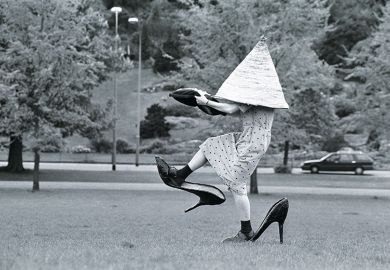In autumn 2017, I experienced a major mental health crisis. I won’t describe the details; it’s enough to say that by November I was at breaking point. I saw a psychiatrist, was placed on sick leave, and spent several months under the care of the NHS home treatment team.
Then, in February 2018, I returned to work and walked into the classroom to teach our second years about the history of rhetoric. It was a difficult moment: I’ve been teaching in higher education for more than 20 years and I normally feel very much at home in the classroom but, after everything that had happened, I was doubtful that I now had much to offer. I felt insubstantial and my material suddenly seemed slight and even facile to me. I couldn’t imagine how any of my lectures would last more than 20 minutes and, as I sat in seminars and tried to promote discussion, I felt like the least inspiring teacher in the world. I was dreading the evaluation forms.
As it turned out, the feedback was much as it always is. My subjective sense of what had happened didn’t seem to match the students’ experience. But I knew that I had to take some action to get out of the rather grim place in which I had arrived and some comments from the evaluation forms gave me an idea. A couple of the students had said that they would have appreciated a more directive reading list and it struck me that building such a resource was a concrete task that would definitely improve the module, whatever my interior state. During summer 2018, I began to read material that I thought I might want to recommend and I quickly became obsessed. I reread staple texts that I hadn’t returned to for some time. I sought out new writing on a wide range of topics. In some cases, I pursued my search for interesting material sideways into adjacent disciplines and chose work by art historians and sociologists that I thought would speak to the students in my English classes.
In some ways, the process was therapeutic. Increasingly I found myself excited by what I was encountering. But, lest this seem like a feel-good story about the healing powers of academic reading, it’s important to say that at times the process actually seemed to fuel the pathological states of mind to which I was still prone. When I read something sophisticated, I often experienced it as a kind of reproach. (“Do you think you’ll ever write anything decent again?”) Conversely, if I read something boring, I experienced a vertiginous sense that I was squandering my life. (“Another hour wasted on nonsense.”) In short, there turned out to be a great deal of emotional content to the process – it was loaded with affect – and this led me to think about the possibility of communicating with the students not only about the ideas examined in the literature but also about how it feels to encounter them.
I began to annotate my reading list and offer some commentary on the emotions that might arise from engaging with particular items. I began by highlighting a number of especially challenging texts and offered some thoughts on how one might cope with the frustrations that kind of material can provoke. Writing about difficulty led me to think about other kinds of affect. Some texts are useful but – let’s face it – boring. Others are rewarding in one way but disappointing in another. Some are deliberately provocative. Others seem exclusive, even occult. There is, of course, a tradition in educational theory that sees learning as necessarily discomforting because, to develop a more sophisticated understanding of a phenomenon, one has to go through the process of watching one’s existing understanding fall apart. Emotion is everywhere in the experience of academic reading.
After sharing the list with a new cohort, I interviewed some of them about their use of it and a clear message appeared. Students appreciated this kind of commentary because they usually feel that their teachers are unaware of how difficult studying can be. They think we have forgotten, and perhaps we have. Navigating the literature of a particular field is fraught with cognitive and affective difficulties. But, as your level of experience rises, you can begin to forget that. You lose touch with what it’s like to be a beginner. Approaching the field with my confidence broken – cortisol raging, serotonin scarce – I found myself particularly conscious of reading as an experience that involves the emotions as well as the intellect.
This has led me to an ongoing process of reimagining that most traditional of pedagogical documents, the reading list, not merely as an inventory of useful resources but as a text that speaks sympathetically to students about the phenomenology of learning – the pleasures and pains that attend upon their first engagement with the academic literature.
Richard Steadman-Jones is senior lecturer in the School of English at the University of Sheffield.
POSTSCRIPT:
Print headline: Prepare them for the pain and pleasure of reading
Register to continue
Why register?
- Registration is free and only takes a moment
- Once registered, you can read 3 articles a month
- Sign up for our newsletter
Subscribe
Or subscribe for unlimited access to:
- Unlimited access to news, views, insights & reviews
- Digital editions
- Digital access to THE’s university and college rankings analysis
Already registered or a current subscriber?










